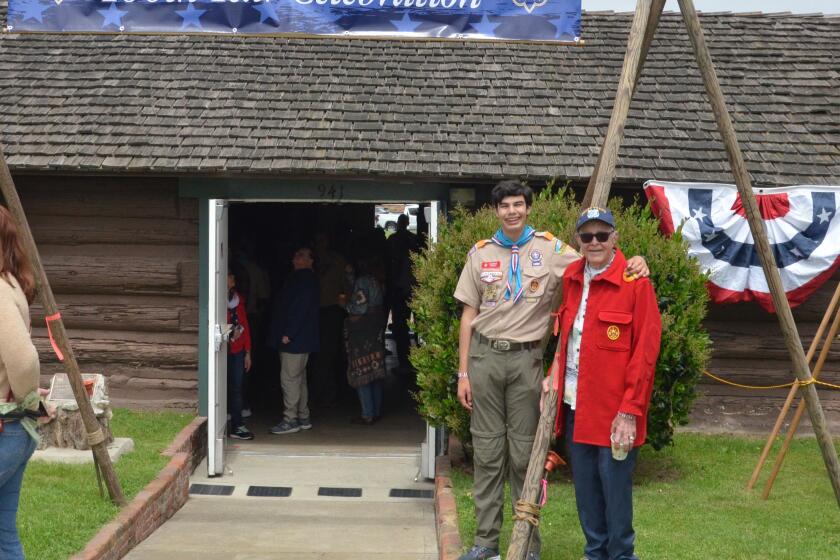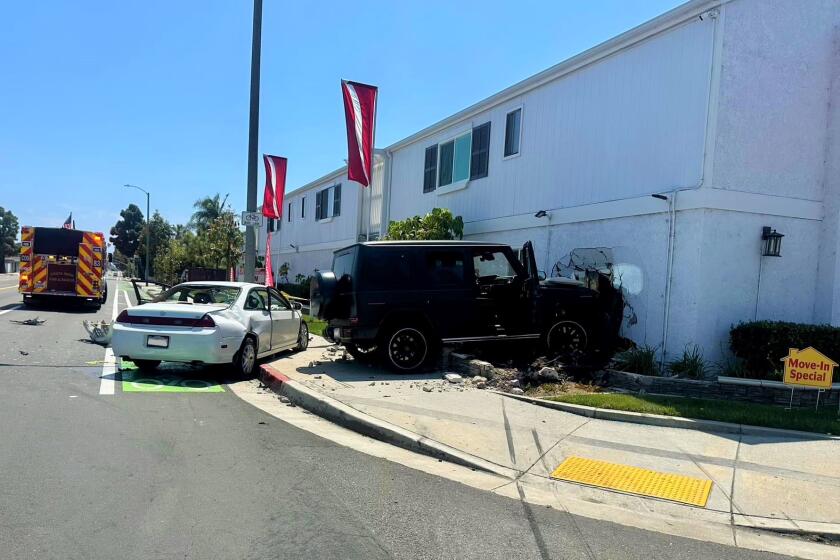Putting science at their fingertips
Textbooks have been the tried-and-true method of relaying information to student, but with recent advances in technology those 300-page books may become paperweights.
Blending the new with the traditional, Huntington Beach High School has started using 40 iPad 2s in their science department, integrating the device within its curriculum and giving students a more hands-on learning experience.
The tablets were funded by the school’s Education Foundation, which paid about $22,000 for the first 40 iPads, said Barbi Raban, president of the foundation.
The nonprofit recently bought 10 more iPads which are on the way to students. They are looking to purchase 50 more by the end of the school year, Raban said.
“It’s fun to interact with the apps,” said Mary Frances Bir, 17, a senior at Huntington. “It’s a creative way of teaching.”
Bir and senior classmate Andrew Fischer, 18, have used these iPads in their biology class, taught by Jayson Ruth, only three times this school year, but see the potential of using tablets in class.
“It simplifies everything. It makes it all easier because it’s in one area and you don’t have to go through different books,” Fischer said. “And we can send [all our classwork] straight to our teacher from the app.”
Ruth and five other teachers in the department are slowly integrating the use of iPads in their classes, using various apps to help students with the curriculum. But others haven’t been as receptive to the idea, Ruth said.
“They’re not replacing the teacher. They’re simply an added resource,” he said.
Having spearheaded the effort, Ruth is enthusiastic about bringing in new technology into the classroom.
“The potential is there to really reach your students on a level that’s never really been possible before,” he said. “If I have an update to an assignment or I want to send a reminder, it’s a few clicks away from every single one of my students.”
Bir, Fischer and their other classmates are given “apptivities” to do in class, utilizing various apps Ruth has downloaded for the students to use to answer questions for an assignment.
He had recently downloaded the app “EarthViewer,” allowing students to spin a digital globe and use various settings, like going back in time and seeing how the Earth’s plates have moved, Fischer said.
“I blend a traditional lesson with technology,” Ruth said. “I’ve got one foot in the old and one foot in the new.
Ruth is responsible for getting iPads for his department. A year ago, Ruth demonstrated to Education Foundation board members the benefits of using different science apps as a teaching resource and they were impressed, Raban said.
“We were just blown away with the 3D molecules and he’s excited and innovative about how he wants to use them,” she said. “We funded quite a few other things that year, but that was one thing that we said we’re going to make a campaign for.”
Launching their “I Am Science” campaign to raise money for the devices, the Education Fountain successfully collected the money – through fundraisers and donations – and bought the first batch of iPads for the science department, Raban said.
Having been part of the textbook-generation, Raban believes that iPads would have been a great asset to have when she was in school.
“Instead of flipping through pages, you’re looking at the screen and it’s a 3D model of my own hand and I can spin it around with my finger,” she said. “It’s phenomenal. I would have had a whole different education if that technology was available. I want to give that to all the kids in the school.”
Now that the department has 50 iPads, the Education Foundation is making a push for the last 50 by throwing a “Casino Night” fundraiser at Meadowlark Country Club Friday night.
“We have to get really creative on how we get those dollars into our schools,” Raban said.
Though the science department sees the benefits of using iPads in the classroom, Raban said other departments haven’t been as enthusiastic. But she hopes the Education Foundation’s efforts not only spark the interests of others at Huntington Beach High School, but for others in the district as well.
“There’s great needs for technology,” she said. “We’re going to try and fund everything we can. We believe in it.”
In nearly 15 years of teaching in Huntington Beach High School, Ruth understands that iPads won’t be replacing textbooks any time soon. But for the time being, he thinks the two mediums sync with one another.
“It’s a whole new realization of something we know a lot about and have to teach, but it’s just a new approach to teaching that same material that they’re tired of learning about,” he said. “They don’t want to learn about cells, but when you can use an app to get them to see the cells in a different light, then I think we’re halfway there in terms of teaching what we want to learn so that ready for the next stage of life.”
anthonyclark.carpio@latimes.com
Twitter: @acocarpio
All the latest on Orange County from Orange County.
Get our free TimesOC newsletter.
You may occasionally receive promotional content from the Daily Pilot.



